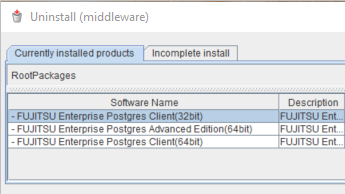This error occurs when the core files cannot be found in the /var/tmp directory (the default location for Fujitsu Enterprise Postgres core files set up by WebAdmin).
This can happen because, by default, Linux deletes from /var/tmp any content that has not been accessed for 30 days or more.
The directory to output core files is specified by the core_directory parameter in postgresql.conf. When you create an instance in WebAdmin, /var/tmp/xxxxx/yyyyy/core is set by default.
Resolution
Do one of the following:
- Specify a directory other than /var/tmp to output core files, then restart Fujitsu Enterprise Postgres.
- Modify the Linux OS environment so that contents of /var/tmp are not automatically deleted after 30 days.
Modifying the Linux default behavior
You can either remove the tmpwatch package (which is responsible for deleting content from /tmp and /var/tmp) or you disable the cron entry.
Please note that in some cases, you may not be able to remove the tmpwatch package, because of its dependencies, so you may want to disable the cron entry instead.
Removing the tmpwatch package
Execute one of the commands below:
# rpm -e tmpwatch
or
# yum remove tmpwatch
Disable the cron entry
Execute one of the commands below:
# mv /etc/cron.daily/tmpwatch /other/location/tmpwatch.bkp
or
# rm /etc/cron.daily/tmpwatch
For details, refer to Fujitsu Enterprise Postgres Installation and Setup Guide for Server > Chapter 4 - Setup > 4.2 - Preparations for setup > 4.2.2 - Preparing directories for resource placement [Linux version] [Windows version].
Applicable to
Product: Fujitsu Enterprise Postgres Standard Edition, Fujitsu Enterprise Postgres Advanced Edition
Versions: from 9.4
Architecture: X86, S390x
Operating System: Windows, Linux



